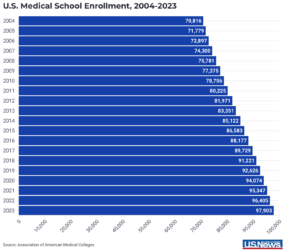
If you’re a football fan, you know that Tom Brady is The GOAT; the Greatest of All Time. There is no serious debate about this since he’s the only NFL player to ever win 7 Super Bowls – 6 with the New England Patriots and 1 with the Tampa Bay Buccaneers. No one else comes close.
If you like statistics, here are some more to consider. Brady threw for 89,214 yards and 649 touchdowns. He was selected to play in 15 Pro Bowls. He won 1 Comeback Player of the Year Award, 2 Offensive Player of the Year Awards, 3 MVP Awards, 5 Super Bowl MVP Awards in his 7 Super Bowl Championships. He played 23 years in the NFL and holds more than 50 NFL records.
This is amazing when you consider Brady was drafted in only the sixth round of the 2000 NFL Draft at pick number 199. That means 198 other players were thought to be better than the eventual G.O.A.T! What made Brady stand out so much compared to his other NFL brethren?
The answer is hard work. Here is an excerpt from his Hall of Fame acceptance speech delivered this past week at Gillette Stadium, home of the New England Patriots:
“I would encourage everyone to play football for the simple reason that it is hard. It’s hard when you’re young and to wake up in the offseason to go train and work out, knowing that all your friends are sleeping in and eating pancakes. It’s hard when you’re on your way to practice, weighed down with all your gear and it’s 90 degrees out and all of the other kids are at the pool or at the beach and your body is already completely exhausted from workouts and two-a-days.
It’s hard to throw, block, catch and tackle and hit kids when they’re way bigger and way more developed than you, only to go home that night bruised and battered, but knowing that you have to show up the next day for just the chance to try again.
But understand this — life is hard. No matter who you are, there are bumps and bruises and hits along the way. And my advice is to prepare yourself. Because football lessons teach us that success and achievement come from overcoming adversity and that team accomplishment far exceeds anyone’s individual goals.
To be successful at anything. The truth is — you don’t have to be special. You just have to be what most people aren’t. Consistent, determined and willing to work for it. No shortcuts. If you look at all my teammates here tonight, it would be impossible to find better examples of men who embody that work ethic, integrity, purpose, determination, and discipline that it takes to be a champion in life.”
This is such a great – and needed – message to young people today. We live in a time of greater prosperity than generations before us – and that prosperity promotes complacency. The generation of my parents has been called The Greatest Generation by former TV anchor Tom Brokaw. That generation didn’t have anything given to them – they had to work hard for everything. They had to overcome the Great Depression of the 1930s and World War II in the 1940s. They knew the meaning of hard work and they would certainly agree with Brady that “life is hard.”
But life has always been hard. The only real difference is today’s young people haven’t learned this lesson yet – but they surely must if they are ever to succeed.
I played football and I wrestled in junior high and high school. The hard work of these sports prepared me for the harder work of college and medical school – and the even harder work of surgical training and residency when I often worked 130 hours a week. That hard work prepared me for success in life and I’m so glad I made the effort. Nothing in life that’s worthwhile comes easily. I agree with Brady – “Life is hard.” The sooner we all accept that the sooner we are prepared for success in life.




